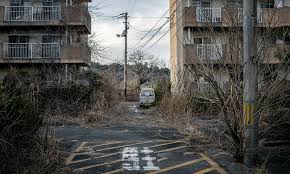Fact-Checking the USSR's Official Statements About the Chernobyl Disaster
The Chernobyl nuclear disaster of April 26, 1986, stands as one of history's worst nuclear catastrophes. In the aftermath, the Soviet government made numerous public statements about the accident, its causes, and its consequences. Today, with declassified documents, scientific investigations, and survivor testimonies, we can examine these claims against historical evidence.
This fact-check analyzes eight significant claims made by Soviet officials following the Chernobyl disaster, evaluating them against the best available evidence.
Claim 1: "The radiation situation at the power station and surrounding area has been stabilized."
Source: TASS News Agency, April 28, 1986
VERDICT: FALSE
The Evidence:
The Soviet government's first official acknowledgment of the disaster came two days after the explosion, claiming the situation was under control. In reality:
- Radiation levels were catastrophically high and increasing in many areas
- Core materials were still burning, releasing more radiation
- No effective containment had been established
- Internal Soviet documents from April 28 showed radiation levels in Pripyat were 1,000 times higher than permitted norms
- Evacuation orders were being prepared even as this statement was released
- Scientists measuring radiation were reporting their dosimeters were maxing out
The statement was a deliberate attempt to downplay the severity of the situation. Valery Legasov, the lead Soviet scientist investigating the disaster, later acknowledged in his posthumously released tapes that the situation was completely unstable when this statement was made.
Claim 2: "Only 31 people died as a direct result of the Chernobyl accident."
Source: Soviet Health Ministry Statement, May 6, 1986 (later revised statements maintained this figure)
VERDICT: FALSE
The Evidence:
This claim dramatically understates the direct casualties:
- Soviet records initially acknowledged only 2 immediate deaths
- The figure was later revised to 31 deaths (mostly firefighters and plant personnel)
- Independent investigations have documented at least 54 direct deaths from acute radiation syndrome and immediate trauma
- Kyshtym nuclear disaster researcher Dr. Zhores Medvedev estimated 300+ fatalities among cleanup workers ("liquidators")
- Medical documents declassified after the Soviet collapse revealed many radiation deaths were classified as state secrets
- Some victims were buried in lead coffins with sealed lids due to extreme radioactivity of their remains
- Hospital records from Moscow Hospital №6 show patients dying of clear radiation poisoning whose deaths were officially attributed to other causes
The actual number of immediate deaths remains contested, but the evidence clearly indicates the official Soviet figure of 31 significantly understates the true toll.
Claim 3: "The evacuation of Pripyat is temporary and residents will return in three days."
Source: Evacuation announcements to Pripyat residents, April 27, 1986
VERDICT: FALSE
The Evidence:
This claim was made to residents of Pripyat, the city closest to the Chernobyl plant, as they were being evacuated:
- Residents were instructed to bring only essential items for a three-day stay
- Many left valuables, documents, and family mementos behind
- Soviet scientists had already calculated radiation levels would make the city uninhabitable for decades
- Internal evacuation planning documents marked "Top Secret" called for permanent resettlement
- Declassified Politburo minutes show officials discussing permanent evacuation while publicly claiming it was temporary
- No evacuees were ever permitted to permanently return to Pripyat
- The city remains abandoned today, 39 years later
The evidence shows Soviet officials deliberately misled evacuees to maintain order and prevent panic, knowing the evacuation would be permanent.
Claim 4: "The radiation release from Chernobyl was minimal and quickly contained."
Source: Multiple Soviet statements, May-August 1986
VERDICT: FALSE
The Evidence:
Soviet officials repeatedly downplayed the amount of radiation released:
- Initial reports claimed only minor releases of radiation
- Later Soviet reports admitted to significant release but still vastly underestimated the amount
- The International Atomic Energy Agency (IAEA) later determined approximately 400 times more radioactive material was released than the atomic bomb at Hiroshima
- 50-85% of the reactor core materials were released into the atmosphere
- Radiation was detected across Europe, with significant deposits as far as Sweden, Germany, and the United Kingdom
- Cesium-137 contamination affected approximately 77,000 square miles (200,000 sq km) of Europe
- Radioactive fallout reached the northern hemisphere globally
Scientific consensus places the Chernobyl disaster as the largest uncontrolled release of radiation in human history, directly contradicting Soviet claims of minimal release.
Claim 5: "The accident was caused exclusively by operator error and violation of procedures."
Source: Soviet Scientific Report at IAEA, August 25, 1986
VERDICT: FALSE
The Evidence:
The Soviet report to the International Atomic Energy Agency placed blame entirely on plant operators:
- The report emphasized six operator procedure violations
- It completely omitted critical design flaws in the RBMK reactor
- Post-Soviet investigations revealed the reactor's positive void coefficient (where reactivity increases with steam formation) was fundamental to the accident
- The graphite-tipped control rods, which initially increased reactivity when inserted, were a critical design flaw
- Soviet nuclear scientists had identified these flaws before the accident but were silenced
- Alexei Yablokov, member of the USSR Academy of Sciences, later acknowledged the design flaws were known but classified
- All RBMK reactors required significant design modifications after Chernobyl
- Academician Valery Legasov, in his suicide tapes, explicitly detailed how reactor design flaws were covered up in official reports
While operator actions contributed to the disaster, the evidence clearly shows reactor design flaws were fundamental to the catastrophic nature of the accident, and Soviet officials deliberately concealed these flaws.
Claim 6: "The emergency response was immediate and comprehensive."
Source: Multiple Soviet statements, May-June 1986
VERDICT: FALSE
The Evidence:
Soviet sources claimed a rapid, effective emergency response when in fact:
- No government commission was formed until 36 hours after the explosion
- Firefighters who responded were not informed of radiation dangers
- Most first responders had no protective equipment
- Medical personnel weren't told they were treating radiation victims
- The government allowed the May Day parade in Kyiv on May 1, 1986, despite dangerous radiation levels
- Iodine prophylaxis (to prevent thyroid absorption of radioactive iodine) was delayed or never provided to many affected populations
- Local officials were not informed of the danger for days
- Dosimeters were confiscated from workers to prevent documentation of exposure levels
- The military conducted surveillance of hospitals to prevent information leaks
Declassified documents and survivor testimonies reveal a response characterized by delays, information suppression, and prioritizing political considerations over public safety.
Claim 7: "Western countries are exploiting the incident for anti-Soviet propaganda purposes."
Source: Pravda Newspaper, May 14, 1986 (and numerous other Soviet media sources)
VERDICT: MOSTLY FALSE
The Evidence:
Soviet media repeatedly accused Western nations of exaggerating the disaster for political purposes:
- The term "radiophobia" was coined to dismiss legitimate health concerns
- Foreign measurements of radiation were called "fabricated"
- Swedish detection of radiation (which first alerted the world to the disaster) was scientifically accurate
- Radiation measurements across Europe were independently verified by multiple scientific bodies
- Internal Soviet documents show officials privately acknowledging radiation spread matching Western reports
- Some Western media reports did contain inaccuracies or exaggerations
- Post-Soviet investigations largely confirmed Western radiation estimates as accurate
- The Soviet government itself was secretly implementing protective measures matching Western risk assessments
While some politicization did occur in Western coverage, the scientific concerns raised by Western countries were largely accurate and based on legitimate radiation measurements, not propaganda.
Claim 8: "Agricultural products from affected regions are safe for consumption."
Source: Soviet Health Ministry and Various Official Statements, May-December 1986
VERDICT: FALSE
The Evidence:
Soviet officials declared food from most affected regions safe despite evidence to the contrary:
- Milk, meat, and crops from contaminated regions continued to be distributed across the USSR
- Internal documents show officials were aware of dangerous contamination levels
- Testing revealed milk with radioactive iodine-131 levels hundreds of times above safety limits
- A classified 1987 report showed 47% of meat samples from Ukraine and Belarus exceeded radiation safety standards
- Secret directives instructed food processing plants to mix contaminated products with clean ones to dilute radiation levels
- Some heavily contaminated food was exported to satellite states
- Medical records show increased thyroid diseases consistent with consumption of contaminated food
- After the Soviet collapse, independent testing confirmed long-term food chain contamination
- Former Soviet health officials later admitted that safety statements about food were politically dictated
The evidence conclusively shows Soviet officials knowingly permitted distribution of contaminated food while publicly declaring it safe.
Conclusion: A Pattern of Deception
This examination of eight major claims by the Soviet government regarding the Chernobyl disaster reveals a pattern of deliberate misinformation. In seven cases, the claims are demonstrably false, while one is mostly false with minor elements of truth.
The evidence indicates Soviet authorities prioritized political concerns and regime stability over public safety, leading to decisions that likely increased the disaster's human toll. Through classification of information, media control, and outright falsehoods, the government presented a narrative that minimized both the severity of the disaster and their responsibility for it.
Only after the Soviet Union's collapse did the full extent of this misinformation campaign become clear through declassified documents, independent investigations, and testimony from former officials. This historical fact-check serves as a reminder of how authoritarian regimes can manipulate information during crises, often at the cost of public health and safety.

